In 1278, Henry, the abbot of the Cistercian monastery in Sedlec, was sent to the Holy Land by King Otakar II of Bohemia. He returned with him a small amount of earth he had removed from Golgotha and sprinkled it over the abbey cemetery. The word of this pious act soon spread and the cemetery in Sedlec became a desirable burial site throughout Central Europe. In the mid 14th century, during the Black Death, and after the Hussite Wars in the early 15th century, many thousands were buried in the abbey cemetery, so it had to be greatly enlarged. Around 1400, a Gothic church was built in the center of the cemetery with a vaulted upper level and a lower chapel to be used as an ossuary for the mass graves unearthed during construction, or simply slated for demolition to make room for new burials. In 1870, František Rint, a woodcarver, was employed by the Schwarzenberg family to put the bone heaps into order, yielding a macabre result.
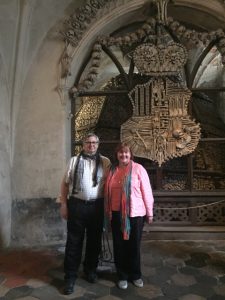


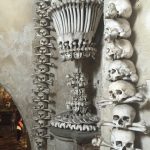
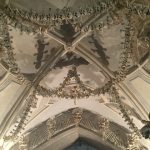
A visit to this Ossuary is a bit macabre what with all the bones around – many in piles, many in decorative forms – actually a little creepy.
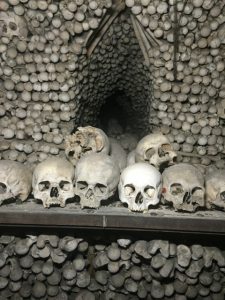
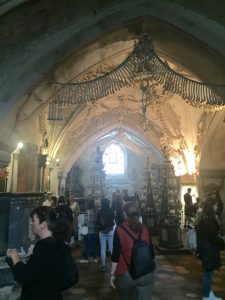
After our visit, we walked over to the Sedlec – the first Cisterican monastery in Bohemia – founded in 1142. An unusual feature is the ability to walk above the vaulted ceilings in the attic and see some of the construction required.
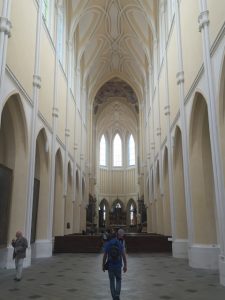

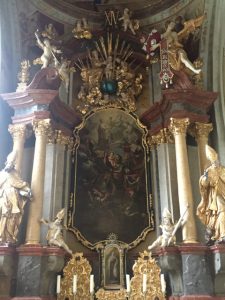
On either side of the Alter were two glass cases hold the Relics of two saints – on the left is St. Vincent – Martyr of ancient room donated by Pope Benedict XIV on the occasion of the 600th anniversary of monastery foundation.
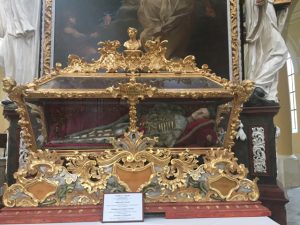
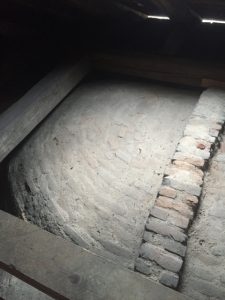
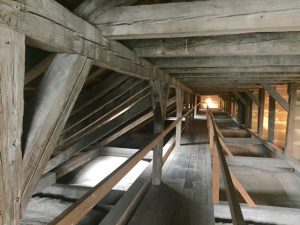
Another church in town is the Cathedral of St. Barbora. Around the courtyard of the church was a medieval style fair happening with people in costume and period games and entertainment being performed. We didn’t join in as it was rather cool and looking like rain. However, we did venture into the Cathedral for a look around.

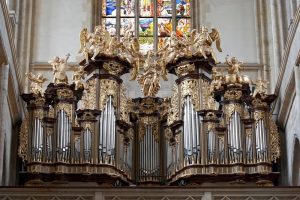
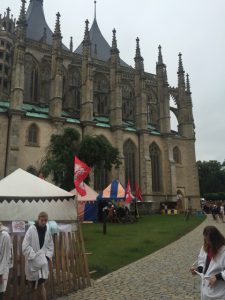
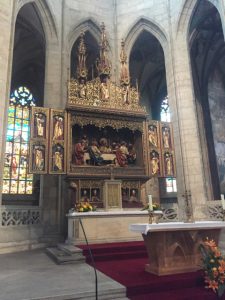
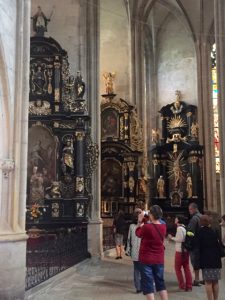
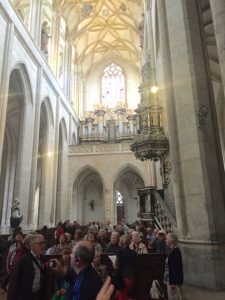
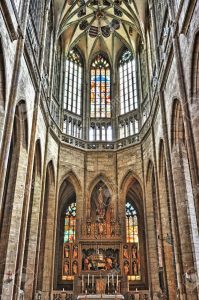 After a delightful lunch with Ilona,
After a delightful lunch with Ilona, 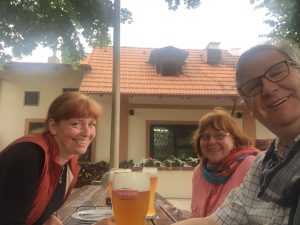 we heading out for more Castle visits.
we heading out for more Castle visits.
One more stop for the day was to was to Konopiste. This Castle had been modified many times ultimately being purchased by Franz Ferdinand d’Este in 1887. At the time, he was the richest member of the Habsburg family at the time and at 21 started to make over this Castle to his liking. Franz was not considered to be a candidate for succession to the throne but that all changed when the King’s brother died of typhus in 1896. Even with this possibility, he married Sophie Chotek – who was not considered of high enough birth to be present at the court of the King. Regardless, Franz was in love and they married and lived mostly in Konopiste only visiting Vienna when required to do so. The castle was modernized during the early 1900’s with electricity and additional bathrooms being installed.
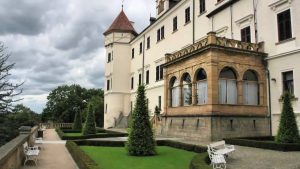
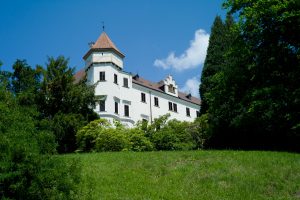
The Castle had a large park around it – all the result of Franz buying up everything around and tearing down all the buildings including a small village. Within the grounds he established various hunting areas, a pond, gardens and all related items to support his luxury lifestyle.
At the moat, just around the Castle, there were kept several bears – still to this day they are present.
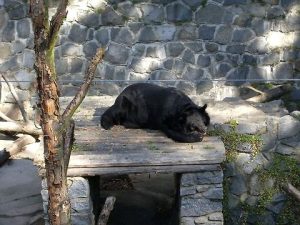
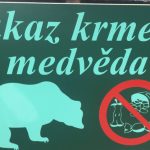
We didn’t tour the Castle as the last tour was being done in the Czeck language – didn’t think we could following along.
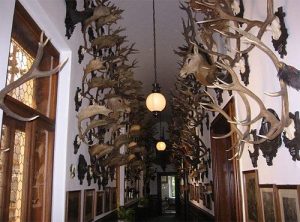
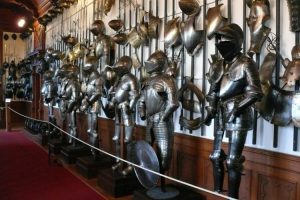
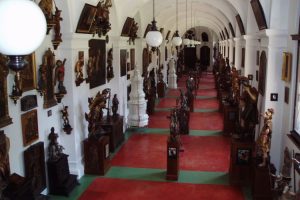
After walking around a bit, Janeen went to the Gardens of course.

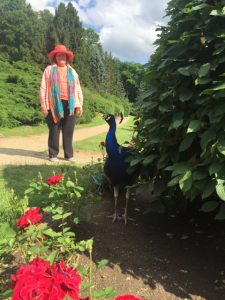

This Castle is significant as the Seat of power for Franz Ferdinand, the successor to the throne of the Austro-Hungarian Empire, and his wife Sophie. When they were assassinated in 1914 it participated the start of World War I.
You two are obviously having such a wonderful time! We are thrilled for you!! Love, Denise & Kirk